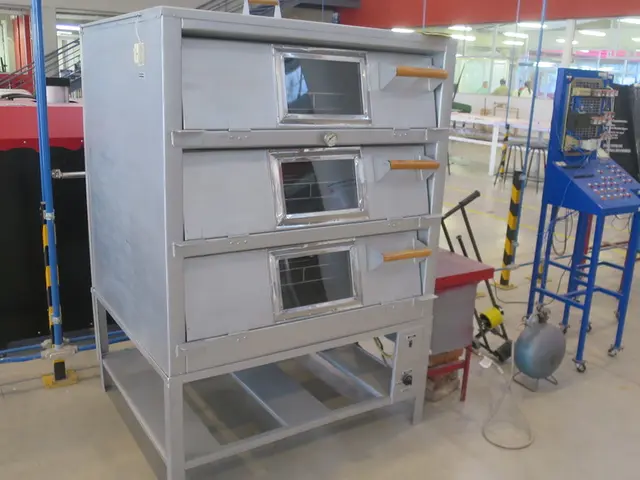Embracing Digital Twins in Retail: 10 Applications and Advantages Explored
In the dynamic world of retail, digital twins are emerging as a game-changer. These virtual, data-driven simulations of stores, products, warehouses, and customer behaviors are helping retailers predict the effects of changes on their physical counterparts, ushering in a new era of efficiency and innovation.
One of the most prominent adopters of digital twins is Amazon, using them to predict inventory needs in its warehouses. By restocking before items run low, Amazon ensures a seamless shopping experience for its customers. Walmart, on the other hand, utilizes digital twins to analyze energy consumption and staff efficiency, making smarter decisions that cut down operational costs without degrading customer experience.
The benefits of digital twins extend beyond inventory management and energy efficiency. Supply chain optimization with digital twins provides a bird's eye view of the entire supply chain, from manufacturer to store shelf. This allows retailers to make adjustments to minimize waste and predict results in various scenarios, enhancing their overall operation.
Fast-fashion brand Zara uses digital twins to optimize production processes, reducing delays and improving product quality. Meanwhile, BMW employs digital twins to model supply chain setups and manufacturing lines for streamlined processes and predictive capabilities.
Digital twins also play a significant role in enhancing customer experiences. By personalizing product recommendations based on past purchases and customer behavior tracking, digital twins can help retailers provide a more tailored shopping experience. Furthermore, digital twins can transform online shopping experiences by enabling virtual try-ons of apparel, accessories, beauty products, etc., reducing return rates.
The global market for digital twins is expected to grow significantly. According to MarketsAndMarkets, the market will reach $110.1 billion by 2028, up from $10.1 billion in 2023. Gartner predicts that the digital twin market will hit a turning point by 2026, soaring to an estimated $183 billion in revenue by 2031.
Despite these promising figures, the retail industry faces challenges such as unpredictable consumer demands, ever-changing market trends, supply chain disruptions, and the need for personalized customer experiences. Digital twins offer a solution to these challenges, consolidating data from multiple sources into a single, real-time dashboard, aiding retailers in making data-driven decisions.
Moreover, digital twin technology can be enhanced with Artificial Intelligence (AI) and Augmented Reality (AR) to predict customer demands, manage inventory, reimagine store layouts, and test new product lines. Companies such as Ansys Inc., Siemens AG, Hitachi Ltd., Autodesk Inc., Dassault Systems SE, PTC Inc., General Electric, Microsoft, and IBM are already using Digital Twin technology in various sectors, including retail, to optimize operations, improve product development, and enable innovation.
Retail giants like Target and Marks & Spencer are also leveraging digital twins. Target uses digital twins to monitor transportation routes and warehouse storage, identifying potential bottlenecks in real-time for adjustments on the fly. Marks & Spencer uses digital twins to monitor their stores' remote operations and make real-time adjustments to improve efficiency across locations.
In conclusion, digital twins are transforming the retail landscape, offering retailers a powerful tool to navigate the complexities of the industry. As the market continues to grow and evolve, it's clear that digital twins will play a crucial role in shaping the future of retail.
Read also:
- Alcohol and Hormones - A Delicate Equilibrium Prone to Disruption
- Farewell uttered to the elderly Berlin rent activist, aged 85, by his companions.
- Energy Efficiency in Housing: Implementing Gender-Targeted Strategies for a Sustainable Future (Part 2)
- Human Bacteria Unveil Fresh Understandings Regarding Human Decision Processes






